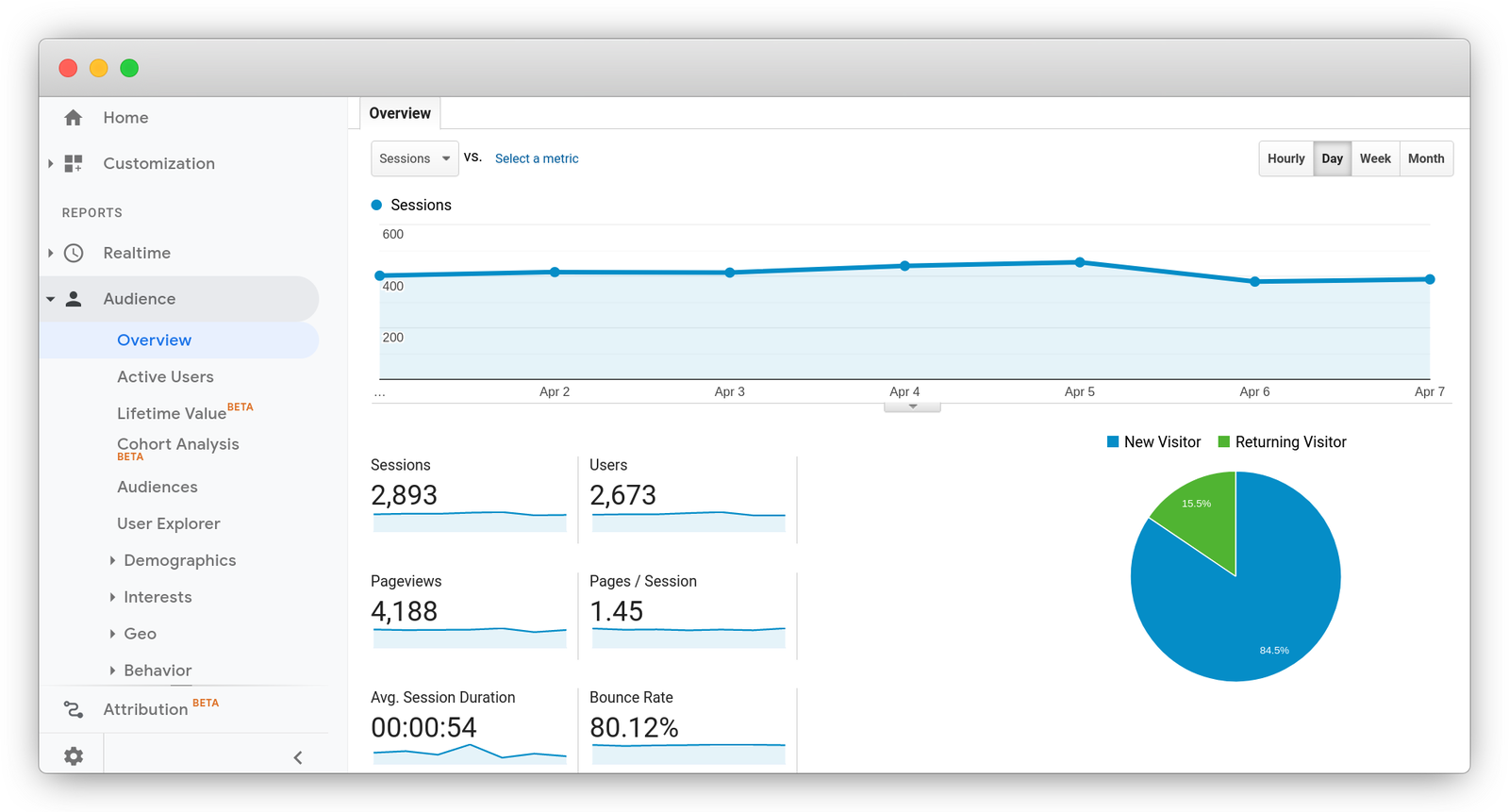Find Out the Secret Sets Off for When Does the Google Analytics Tracking Code Send an Event Hit to Analytics
Find Out the Secret Sets Off for When Does the Google Analytics Tracking Code Send an Event Hit to Analytics
Blog Article
Enhance Your Search Engine Optimization Strategy With Effective Google Analytics Tracking Code
Integrating Google Analytics tracking code into your Search engine optimization strategy is a pivotal action toward accomplishing quantifiable outcomes. What specific techniques can you embrace to make best use of the effect of this information on your SEO initiatives?

Comprehending Google Analytics Fundamentals
To effectively take advantage of Google Analytics for SEO, it is important to understand its fundamental ideas. Google Analytics functions as an effective device for monitoring and examining web site traffic, supplying insights that are vital for maximizing online search engine efficiency. At its core, the platform makes it possible for individuals to monitor customer behavior, traffic resources, and vital performance indicators (KPIs) such as bounce prices and session durations.
Familiarity with the user interface is crucial. The Target market area offers market insights, helping to tailor web content to target users efficiently.
Understanding metrics such as organic web traffic volumes and conversion rates is crucial for assessing SEO performance. Inevitably, grasping these essentials allows electronic marketing experts to harness the complete capacity of Google Analytics, driving notified choices that enhance total search engine optimization strategies. By establishing a solid foundation, organizations can efficiently examine their performance and determine opportunities for renovation in their online visibility.
Establishing Up Monitoring Code
Correctly establishing the tracking code is critical for accurate information collection in Google Analytics. The initial step involves creating a Google Analytics account and building, where you will certainly receive a special monitoring ID. This ID is essential for linking your internet site's information to your Google Analytics account.
As soon as you have your monitoring ID, integrate the tracking code snippet right into your web site's HTML. This is normally placed in the header area of each web page to ensure it tons early in the page providing procedure. If you're utilizing a Material Administration System (CMS) like WordPress, lots of plugins streamline this procedure, permitting you to add the monitoring code without direct HTML editing.
After executing the monitoring code, it is vital to evaluate its functionality. You can utilize the Google Tag Assistant tool to confirm if the tracking code is correctly set up and operating. Additionally, keep an eye on the real-time reporting feature in Google Analytics to confirm that information is being collected appropriately.
Guaranteeing that the monitoring code is properly established up lays the structure for effective information evaluation, allowing you to make educated decisions to enhance your SEO approach and overall web site performance.
Key Metrics to Monitor
Determining vital metrics to monitor is important for recognizing the performance of your SEO approach with Google Analytics. By concentrating on specific data points, you can evaluate the effect of your optimization initiatives and make notified decisions to improve efficiency.
This metric mirrors the total health and wellness of your Search engine optimization method. A high bounce rate may indicate that your material is not satisfying user assumptions or that your landing web pages require improvement.
Additionally, think about tracking conversion rates, as these metrics reveal just how well your website fulfills its business purposes, such as producing leads or sales. Key words rankings are additionally crucial; tracking changes in keyword settings assists evaluate the efficiency of your targeted search engine optimization efforts. Finally, analyze the average session period, which indicates customer involvement Full Article and material relevance. By closely complying with these key metrics, you can get valuable understandings into your SEO strategy's performance and determine locations for enhancement.
Analyzing User Habits
Recognizing individual habits is crucial for refining your SEO technique and optimizing website efficiency. Google Analytics supplies a riches of data on customer engagement metrics, such as bounce rates, time on site, and page sights per session.
Additionally, tracking user circulation can expose usual navigation courses, highlighting prospective traffic jams or locations for enhancement. Comprehending the demographics, rate of interests, and geographical locations of your site visitors permits even more customized web content that talks with their demands. Making use of division attributes in Google Analytics better enhances your capability to examine user behavior by allowing you to contrast various audience teams.
Furthermore, keeping track of conversion rates and user actions can supply understandings right into the performance of your phone call to activity and overall site style. This holistic view of customer behavior is important for making educated decisions that improve individual experience and drive greater involvement, inevitably about his contributing to improved SEO performance.
Leveraging Insights for SEO
Consistently leveraging insights obtained from individual habits analysis can dramatically boost your SEO initiatives. By using Google Analytics, you can identify key metrics such as bounce rates, session duration, and individual flow, which expose just how visitors connect with your content. These understandings enable you to pinpoint areas requiring enhancement, such as high exit web pages or underperforming search phrases.

Furthermore, tracking organic traffic resources provides clarity on which networks are most effective, allowing you to allot sources strategically (when does the google analytics tracking code send an event hit to analytics?). By assessing conversion rates along with website traffic information, you can recognize which pages drive actual service outcomes, refining your SEO strategy better
Including these insights right into your content strategy not just improves visibility but likewise cultivates a more user-centric strategy. Inevitably, a data-driven search engine optimization approach notified by analytics not only boosts rankings however also aligns your goals with customer assumptions, causing continual growth and engagement.
Verdict
Efficient implementation of Google Analytics tracking code considerably boosts a Search engine optimization technique by giving crucial understandings right into customer behavior and website traffic resources. Inevitably, leveraging these understandings contributes to refining Search engine optimization initiatives, driving even more pertinent web traffic, and boosting general internet site efficiency.
Including Google Analytics tracking code right into your SEO strategy is a crucial step towards achieving quantifiable results. At its core, the system allows customers to monitor user actions, website traffic sources, and key efficiency indications (KPIs) such as bounce rates and session durations.
Comprehending customer habits is vital for fine-tuning your SEO approach and making the most of website performance.Regularly leveraging understandings acquired from user behavior analysis can considerably improve your Search engine optimization initiatives.Reliable implementation of Google Analytics tracking code substantially boosts a SEO strategy by supplying critical understandings right into user habits and web traffic sources.
Report this page